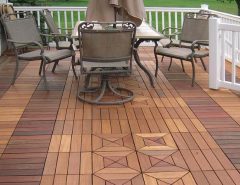The trend of multi-generational living, a model where family members across various generations inhabit the same home, is seeing a notable revival. Commonly involving a mix of grandparents, parents, and children, this lifestyle is a return to traditional family structures in response to the changing dynamics of our society. As people continue to search for a more balanced lifestyle, the many benefits of multi-generational living are being rediscovered and appreciated anew.
This renewed interest, however, doesn’t come without its challenges. Balancing the diverse needs of each generation requires thoughtful consideration and careful planning. Herein lies the key to creating a comfortable, harmonious, and functional living space for everyone involved. With this in mind, this article presents you with a series of insightful ideas to help shape your home into a thriving multi-generational living space and strengthen the bonds between generations.
Embracing Universal Design Principles
Universal design is an innovative concept that focuses on making home products and environments accessible to everyone, to the greatest extent possible, without needing modifications or specialized designs. Incorporating these principles into a multigenerational home ensures that it remains comprehensible and user-friendly to everyone who lives there, regardless of age, size, ability, or disability. This could include broadened hallways to allow for wheelchair passage; countertops lowered for shorter individuals or those using wheelchairs, and easy-to-operate handles and switches.
Ensuring Bathroom Accessibility and Safety
The bathroom is a key area of focus when designing a multigenerational home. Emphasizing safety and accessibility can help mitigate the risk of accidents and make the space accommodating for everyone.
Considerations could include walk-in showers, safety bars, anti-slip flooring, and raised toilets. If you’re contemplating a renovation project to create a safer, more accessible space, start your search by typing bathroom remodeling experts near me on the search bar. This can lead you to experts who offer invaluable advice and professional services for such endeavors.
Adaptable Kitchen Design
The kitchen is typically the center of a home, so its design must accommodate all family members.
Consider the installation of adjustable counters and sinks for use by both adults and children. Appliances with clear, easy-to-operate controls and side-opening doors are also advantageous for all users. Open floor plans can create enough room for multiple cooks and facilitate easier movement and interaction.
Adaptable Shared Spaces
Consider designing communal areas like living rooms with an emphasis on flexibility, catering to all family members’ diverse activities and requirements. An effective strategy is to adopt open floor plans that encourage fluid furniture arrangements and ease of movement, thereby creating a space that can morph from a children’s play area in the afternoon to a tranquil reading nook for grandparents in the evening. It’s essential to design these shared spaces in such a way that they foster interaction and bonding among family members.
Respecting Privacy and Individual Space
While common areas promote interaction and bonding, upholding each individual’s need for solitude in a multigenerational home is vital. Everyone should have an area they can call their own, even if it’s a small corner in a shared room. These personal areas should mirror the individual’s requirements and character, be it a tranquil reading nook for a grandparent, a study space for a college student, or a play spot for a toddler. Infusing soundproofing elements into walls and floors can further ensure a serene atmosphere.
Embracing Outdoor Living
Outdoor spaces are significant in multigenerational homes, offering additional zones for relaxation, play, gardening, and other pursuits. Patios, gardens, and even mini playgrounds can provide pleasurable and restful sanctuaries for all age groups. To maximize accessibility, consider incorporating ramps where needed, utilize slip-resistant surfaces, and ensure sufficient shade for comfort in warm weather.
Optimal Lighting
A significant aspect of making a multigenerational home functional for all its occupants is the strategic use of lighting. Optimal illumination makes navigating the home safer and easier for everyone, particularly the elderly who might have diminished vision.
Consider installing adjustable lighting systems that allow for bright light for tasks like reading or cooking and softer light for relaxation. Including ample natural light via skylights or large windows can also be a game changer, enhancing mood and well-being.
Features for Aging in Place
When envisioning multigenerational living, think about incorporating elements that allow older family members to age in place securely and comfortably. This could mean setting up grab bars in bathrooms, integrating a stair-lift, or even planning a full bedroom and bath on the ground floor to limit stair-climbing. Mindful design choices like these can ensure your home remains a suitable dwelling for elderly family members as their needs evolve.
Spaces Welcoming for Children
Creating child-friendly areas in your home is another pivotal aspect of multigenerational design. Opt for child-safe materials, anchor furniture to prevent tipping, and contemplate a dedicated playroom where youngsters can explore freely without risk. Furniture with rounded corners, ample storage for toys, and kid-friendly surfaces that are a breeze to clean can make a home more inviting for the youngest family members.
Harmonizing Beauty and Practicality
Crafting a multigenerational living space is not solely about ensuring functionality—it should also be aesthetically pleasing. Balancing a home that looks appealing and serves its purpose for all generations can be a challenge, yet it is achievable.
Consider employing color schemes, furniture styles, and decor that resonate with all family members. Robust yet visually appealing materials can ensure your home endures wear and tear while remaining stylish.
Conclusion
As society progresses, multigenerational living offers numerous families a feasible and gratifying solution. Armed with a comprehension of each other’s needs and thoughtful design choices, it’s possible to shape a home where everyone can prosper.
Whether you’re undertaking minor modifications or a comprehensive remodel, bear in mind that the objective is to craft a space that feels like home to everyone—no matter their age or life stage. After all, the essence of multigenerational living extends beyond just sharing a home—it’s about nurturing deeper bonds with those you love.




